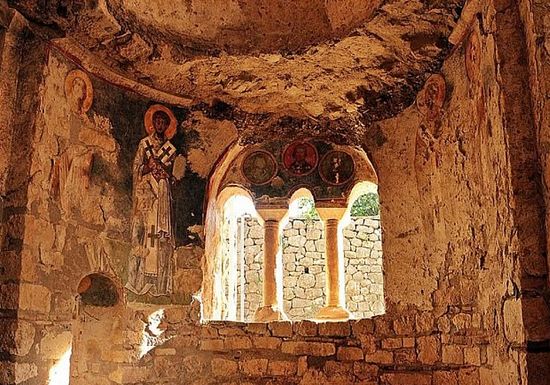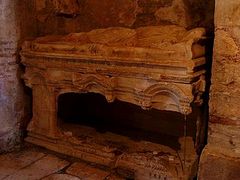Demre, Turkey, October 6, 2017
Chairman of the Imperial Orthodox Palestinian Society for the Protection of Christians in the Middle East and North Africa Elena Agapov sees a hidden meaning in the recent news about the supposed discovery of the untouched tomb of St. Nicholas in Demre, Turkey.
“I think there is a political context here,” Agapov said on Friday during a break in a meeting of the Committee of Representatives of Orthodox Churches to the European Union, reports Interfax-Religion.
Turkish archaeologists believe they may have discovered the tomb of St. Nicholas below a church in the Demre district of Turkey’s southern Antalya Province, known as the birth place of the great hierarch of Myra. A special section containing a grave site was discovered beneath St. Nicholas Church while conducting digital surveys.
The archaeologists’ claims over the 1,674-year-old relics of St. Nicholas clash with the history accepted by both the Orthodox and Catholic Church. St. Nicholas was interred in the church in Demre, formerly known as Myra, in 343, where his relics remained until the 11th century, when they were taken during the Crusades to Bari, Italy, where they now lie in the Basilica di San Nicola.
Agapov considers it no accident that this news has come out after Patriarch Kirill and Pope Francis met in Havana last year and made a joint declaration on the protection of Christians, and after the relics of St. Nicholas visited Russia from Bari, where they were venerated by more than 2.5 million faithful.
According to the society head, the news of the discovery of the supposed true grave of St. Nicholas is “an attempt to introduce into the minds of many people doubts about the authenticity” of events surrounding the life and veneration of the beloved saint.
In turn, coordinator of the activities of the centers for studying Orthodox sacred objects of the Russian Orthodox University and of the St. Petersburg Diocese Michael Arteev has expressed the opinion that “various fake news and relics” have been and are being created to attract pilgrims.
Speaking of the find, Cemil Karabayram, the head of the Antalya Monument Authority indeed stated, “The world’s eyes will be set on here. We claim that St. Nicholas has been kept in this temple without any damage. We are at the last stage. If we get the results, Antalya’s tourism will gain big momentum.”
“Turkey has ‘lit up’ many times already with ridiculous PR about St. Nicholas’ relics. I think this is just another story. There’s no real news so far, and there’s simply nothing to discuss—this is just advertising noise. We’re constantly faced with this kind of stuff at work, so I begin every conversation with ‘Show us the documents,’ ‘Substantiate your assertion,’” Arteev said, calling the story mere “Turkish hype.”



The translation of the relics to Bari happened in 1087.
Jerusalem was kept in 1099 by Godfried from Bouillon,leader of the first Crusade.
So I think that the first Crusade is not directly involved,but rather pious christian merchants from Bari,or even Greek people who fled the Turkish invasion.
Saint Nicholas the Wonderworker is also vey popular in Belgium,the Netherlands and France by roman-catholics.
This question is a typical Turkish political manipulation of history.